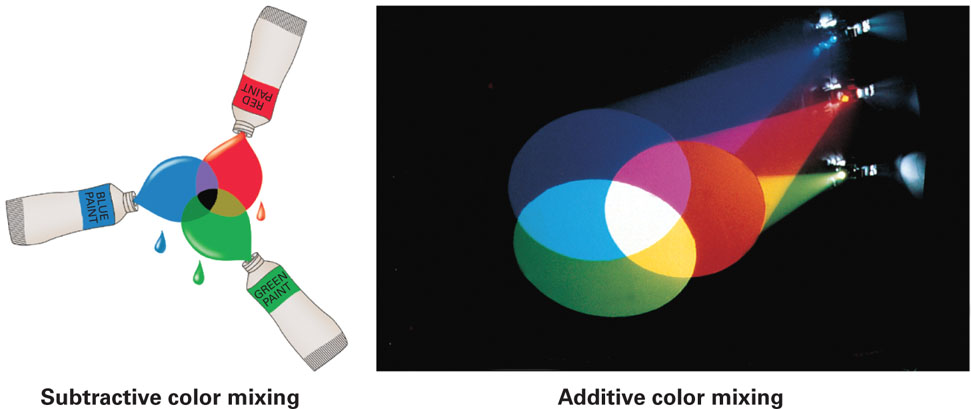
Figure 3.6 Subtractive and Additive Mixtures (a) In a subtractive mixture, some wavelengths are absorbed (subtracted) and so do not get reflected from the mixture. For example, mixing equal amounts of red, green, and blue paints is a subtractive mixture. The intersection of all three colors appears black. (b) Mixing equal amounts of red, green, and blue wavelengths of light, however, is an additive mixture in which all the wavelengths are directly mixed together, producing different results than mixing paints of these three colors. For example, the intersection of all three wavelengths appears white. The binary additive mixtures are also counterintuitive. For example, the additive mixture of equal proportions of red and green wavelengths of light appears yellow.
Fritz Goro/Time Life Pictures/Getty Images